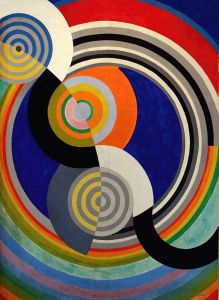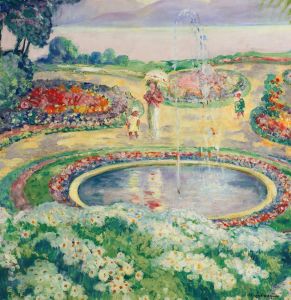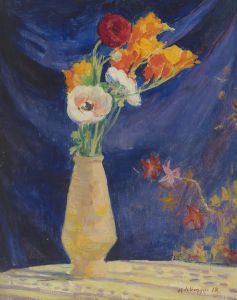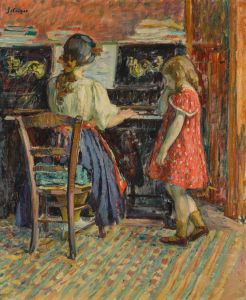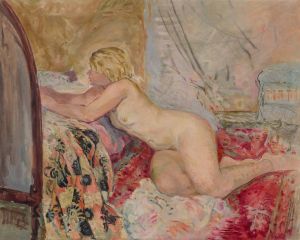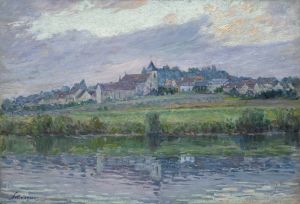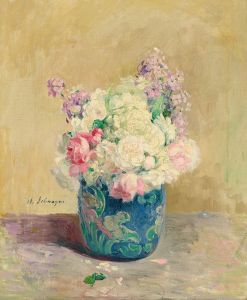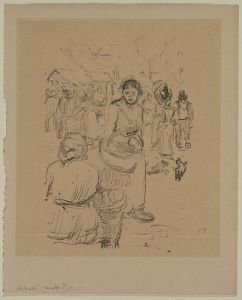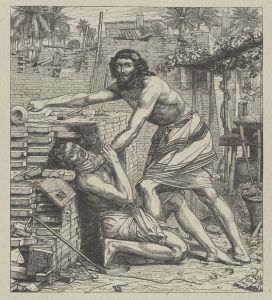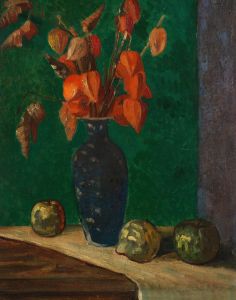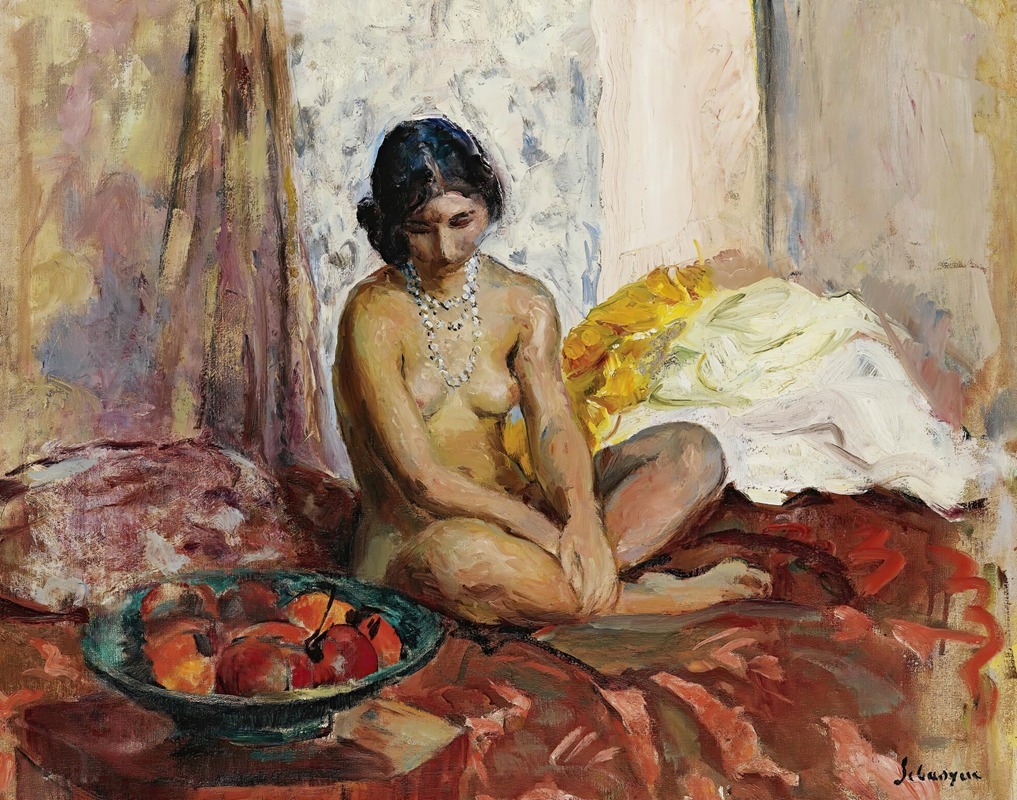
L’égyptienne Au Plateau De Fruits
A hand-painted replica of Henri Lebasque’s masterpiece L’égyptienne Au Plateau De Fruits, meticulously crafted by professional artists to capture the true essence of the original. Each piece is created with museum-quality canvas and rare mineral pigments, carefully painted by experienced artists with delicate brushstrokes and rich, layered colors to perfectly recreate the texture of the original artwork. Unlike machine-printed reproductions, this hand-painted version brings the painting to life, infused with the artist’s emotions and skill in every stroke. Whether for personal collection or home decoration, it instantly elevates the artistic atmosphere of any space.
Henri Lebasque was a French post-impressionist painter known for his vibrant use of color and light, often depicting intimate domestic scenes and landscapes. Born in 1865 in Champigné, France, Lebasque studied at the École des Beaux-Arts in Paris and was influenced by the works of Pierre Bonnard and Édouard Vuillard, as well as his association with the Nabis group. His style evolved over time, incorporating elements of impressionism and fauvism, characterized by a bold palette and a focus on capturing the essence of his subjects.
"L’égyptienne Au Plateau De Fruits" is one of Lebasque's notable works, showcasing his mastery in portraying figures with a sense of warmth and intimacy. The painting features a woman, presumably of Egyptian descent, seated with a platter of fruits. This composition reflects Lebasque's interest in exotic and diverse subjects, a theme that was popular among many artists of his time who were inspired by the increasing globalization and cultural exchanges of the late 19th and early 20th centuries.
The painting is a testament to Lebasque's ability to blend color and form to create a harmonious and inviting scene. The use of light in the painting is particularly noteworthy, as it highlights the textures and colors of the fruits, as well as the woman's attire and features. Lebasque's brushwork is both fluid and precise, capturing the subtleties of the subject's expression and the surrounding environment.
Lebasque's work often depicted women and children in relaxed, everyday settings, and "L’égyptienne Au Plateau De Fruits" is no exception. The painting exudes a sense of tranquility and contentment, inviting the viewer to appreciate the simple pleasures of life. This focus on domesticity and the beauty of ordinary moments is a recurring theme in Lebasque's oeuvre, reflecting his belief in art's ability to elevate the mundane.
Throughout his career, Lebasque exhibited widely, gaining recognition for his unique approach to color and composition. His works were featured in the Salon des Indépendants and the Salon d'Automne, and he was associated with the Fauves, a group of artists known for their radical use of color. Despite this association, Lebasque's style remained distinct, characterized by a softer palette and a more intimate approach to his subjects.
"L’égyptienne Au Plateau De Fruits" exemplifies Lebasque's artistic philosophy, where the interplay of light and color serves to enhance the emotional resonance of the scene. The painting invites viewers to engage with the subject on a personal level, evoking a sense of familiarity and connection.
Today, Henri Lebasque's works are celebrated for their contribution to the post-impressionist movement and their enduring appeal. His paintings continue to be exhibited in galleries and museums worldwide, appreciated for their vibrant depiction of life and their ability to capture the essence of human experience. "L’égyptienne Au Plateau De Fruits" remains a significant piece within his body of work, illustrating his skillful blend of color, light, and form to create art that is both visually striking and emotionally engaging.





